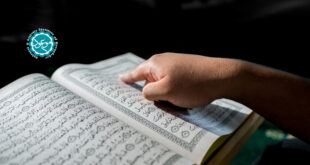2. The arrogant and powerful aristocrats who were ruling Mecca
The second enemy was Mecca which played a central role. It is true that there was not a government in common terms in Mecca. But an arrogant, powerful, influential and aristocratic group of people ruled this city. These people had certain disagreements, but they became united against this nascent system. The Holy Prophet (S) knew that the main danger came from these people. And the same thing happened in practice.
He felt that if he waited for them to come to him, they would have a good opportunity. Therefore, he started to get involved with them. But he did not move towards Mecca. There was a caravan from Mecca which had to pass through a road near Medina. The Holy Prophet (S) began to attack them. In the beginning, the Battle of Badr was the most important attack. The Holy Prophet (S) began these attacks and these arrogant tribes waged a war against him because of their prejudice and obstinacy.
For around four, five years, the situation was the same. That is to say, the Holy Prophet (S) did not leave them alone. On the other hand, they were hoping to root out this nascent system that is to say, the Islamic government which threatened them. This was the reason behind the Battle of Uhud and many other battles.
The last battle which they fought against the Holy Prophet (S) was the Battle of the Trench which was one of the most important battles. They gathered all their strength and they received help from others. They said, “We will go and kill the Holy Prophet (S) and 200, 300, 500 of his close companions. We will plunder Medina and we will return comfortably. There will be no sign of them anymore.” Before they arrived in Medina, the Holy Prophet (S) became aware of the invasion and he dug that famous trench.
Medina could be attacked from one side. Therefore, they dug a 40-meter trench along that side. This happened during the month of Ramadan. According to certain narrations, it was very cold. The rainfall was low that year and the people did not have a source of income. So, there were many problems. The Holy Prophet (S) worked harder than everybody. During the time they were digging the trench, whenever he saw that somebody had become tired and could not go on, he took the shovel from him and he did his work.
That is to say, he did not only order things to be done. He was physically active among the people. The unbelievers gathered on the other side of the trench. But they realized that they could not pass through it. Therefore, they had to return while they were humiliated, hopeless and frustrated. The Holy Prophet (S) said, “It is over. This was the last attack that Quraysh carried out against us. From now on, it is our turn. We will move towards Mecca and we will confront them.”
A year after that, the Holy Prophet (S) announced that the Muslims wanted to go to Mecca for Umrah. The event of Hudaybiyyah which is a very significant event happened during this time. The Holy Prophet (S) moved towards Mecca to perform Umrah. They saw that the Holy Prophet (S) was coming to Mecca during a Haraam month a month in which fighting is forbidden and the people of Mecca as well as the Muslims respected Haraam months. What should they do? Should they clear the way for him to enter Mecca? What will Muslims do after this success? How can they confront the Holy Prophet (S)? Should they fight with him? How should they fight?
Finally, they decided to prevent him from coming to Mecca. They said, “We will massacre them if we find a good pretext.” By relying on his wisdom, the Holy Prophet (S) acted in a way that they had to sign a treaty with him in order to make him return. Under this treaty, he could return to Mecca a year after that and perform Umrah. Throughout the region, the ground was prepared for him to promote Islam. This treaty is referred to as a peace treaty. But Allah the Exalted says in the Holy Quran,
“Verily We have granted you a manifest victory.” 1
If people refer to reliable history books, they will see how amazing the event of Hudaybiyyah is. A year after that, the Holy Prophet (S) went to Mecca for Umrah and unlike them, the power of this great personality began to increase. A year after that is to say, in the eighth year after the migration the Holy Prophet (S) went and conquered Mecca after the unbelievers had breached the treaty. It was a great victory and it showed the power of the Holy Prophet (S). So, he treated this enemy with wisdom, strength and patience and without becoming frantic and retreating even one single step. He continued moving forward every day.
3. The three Jewish tribes
The third enemy was the Jews that is to say, the unreliable outsiders who temporarily agreed to live with the Holy Prophet (S) in Medina. But they did not stop being deceitful and creating problems. If you take a look at the Holy Quran, you will see that an important part of Sura al-Baqara and other suras in the Holy Quran is about the behavior of the Holy Prophet (S) towards the Jews and his cultural battle against them.
Since as I said they had a rich cultural background, they were knowledgeable in certain areas and they deeply influenced the minds of people who did not have a strong faith. These Jews hatched plots, made the people hopeless and they pitted them against one another. They were an organized enemy. The Holy Prophet (S) tolerated them as much as he could. But when he saw that they could not be tolerated, he punished them. The Holy Prophet (S) did not get involved with them without any reason. Each of these three tribes did something and the Holy Prophet (S) punished them based on their actions.
First, it was Banu Qaynuqa who betrayed the Holy Prophet (S). He went to them and announced that they should leave. He made them move out of Medina and all their things remained for the Muslims to use. The second tribe was Banu Nadir. They also betrayed the Holy Prophet (S) – the story of their betrayal is important. The Holy Prophet (S) told them that they should take some of their things and leave. And they had to leave.
The third tribe was Banu Qurayza whom the Holy Prophet (S) allowed to stay. He did not make them leave Medina. He signed a treaty with them so that during the Battle of the Trench these Jews would not let the enemy enter Medina through their settlements. But they betrayed the Holy Prophet (S) and they allied themselves with the enemy so that they could attack the Holy Prophet (S) alongside the enemy.
That is to say, not only did they not adhere to their treaty with the Holy Prophet (S), but they also went and negotiated with the enemy so that they together with the enemy could enter Medina through their settlements and stab the Holy Prophet (S) in the back. This happened while the Holy Prophet (S) was digging a trench in a part of Medina which could be penetrated. The settlements of the Jews were on the other side of Medina where they were supposed to prevent the enemy from entering Medina.
In the middle of their plots, the Holy Prophet (S) became aware of the situation. The siege of Medina lasted for almost one month. It was in the middle of this month that the Jews began to commit this act of betrayal. The Holy Prophet (S) found out about their decision. By adopting a very wise measure, he did something to make these Jews and Quraysh break off their relations, which has been recorded in history books. He acted in a way that the Jews and Quraysh lost their trust in one another. This was one of the most beautiful tricks that the Holy Prophet (S) used in wars. That is to say, he temporarily held the Jews at bay so that they could not inflict any harm.
After Quraysh and its allies were defeated and after they drifted away from the trench to return to Mecca, the Holy Prophet (S) returned to Medina. On the same day that he returned, he performed noon prayers and then he said, “We will be saying afternoon prayers in front of Banu Qurayza castles. We should move towards them.” He did not even delay it for one night. He went there and besieged them.

 Mouood Mouood English Edition
Mouood Mouood English Edition



